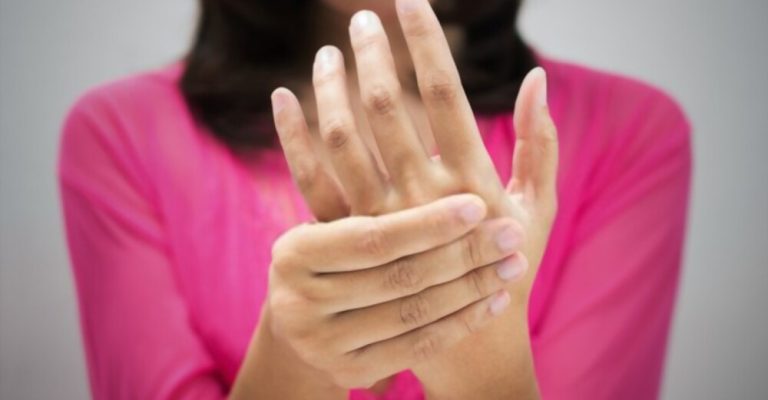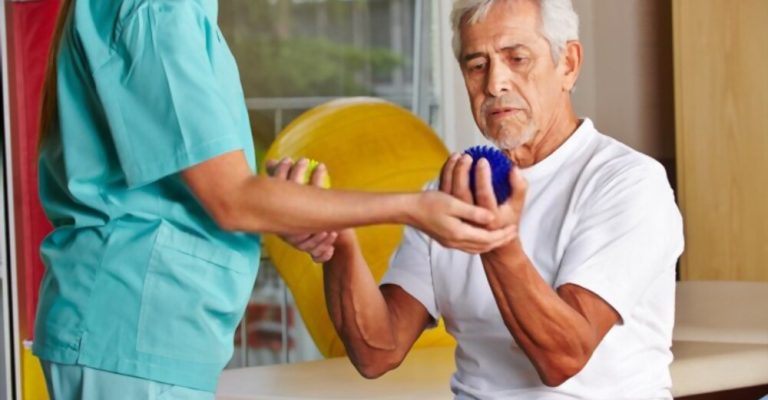
If you or someone you love has suffered from a stroke, chances are rehab is on the top of your mind. One key component of recovery for many stroke survivors is hand exercises to regain grip strength and dexterity in both hands. Of course, you may have heard about popular methods such as playing table tennis or squeezing stress balls.
Still, there are more specific tools for hand rehabilitation that can help improve the range of motion, strengthen muscles in the hands and fingers, and even help with pain relief. In this blog post, we’ll discuss some of the best options available regarding ideal hand exercisers that can help kickstart stroke rehabilitation. Keep reading to discover how these devices can assist in regaining mobility and restoring quality of life!
Finger exercises improve the strength, flexibility, and skill of finger muscles, allowing the stroke survivor to perform daily activities efficiently. These exercises can be performed both passively and actively. Passive exercises involve moving the affected hand’s fingers with the help of the unaffected hand or a therapist. Conversely, active exercises require the stroke patient to move their fingers.
Hand-gripping is one of the most effective finger exercises for stroke rehab. To perform this, the patient needs to squeeze a soft object, such as a sponge or ball, with their affected hand. The exercise should be repeated ten times for each hand and carried out thrice daily.
Other popular finger exercises include finger tapping, where the patient taps their fingers on a hard surface, and finger pinching, where the patient tries to pick up small objects, such as beans or coins.
Finger exercises not only improve hand and finger strength but also help to enhance overall hand-eye coordination and spatial awareness. In addition, these exercises can improve cortical plasticity, the brain’s ability to create new neural pathways and relearn lost motor skills. Thus, these exercises are crucial to stroke rehabilitation and contribute significantly to the stroke survivor’s quality of life.

Hand therapy balls are specialized therapeutic tools designed to aid in rehabilitating hand and finger muscles. They are typically small, squeezable objects made of various materials such as foam, gel, or silicone. Hand therapy balls come in different sizes, textures, and resistance levels, allowing for a customized approach to meet the specific needs of stroke rehabilitation.
When it comes to stroke rehab, hand therapy balls offer several benefits. Firstly, they effectively improve grip strength, often weakened or lost after a stroke. By squeezing the therapy balls, individuals engage the muscles responsible for gripping, promoting muscle strength and endurance.
Regular use of hand therapy balls can help restore grip strength, allowing stroke survivors to regain the ability to hold and manipulate objects, enhancing their overall independence and functionality in daily activities.
Secondly, hand therapy balls are instrumental in improving the range of motion in the hand and fingers. Stroke can cause stiffness and limited mobility in these areas, making performing tasks requiring fine motor skills challenging.
However, individuals can engage in active range of motion exercises through squeezing, rolling, tossing, and stretching the therapy balls. These movements promote the extension and flexion of the hand, stimulating the muscles and joints and gradually increasing flexibility and agility.
Hand therapy balls also provide sensory stimulation, benefiting stroke survivors experiencing sensory deficits. A stroke can lead to reduced sensation or altered perception in the hand.
The various textures and materials of the therapy balls offer tactile feedback, stimulating the sensory receptors in the hand. This sensory input promotes neural reconnection and helps individuals relearn and reestablish a proper sense of touch, improving overall hand function.
MusicGlove combines therapeutic hand exercises with a musical game-like interface, making the rehabilitation process engaging and enjoyable. It consists of a wearable glove embedded with sensors and an accompanying software program.
The sensors detect finger movements and transmit the data to the software, translating the movements into a musical game. The user is then prompted to make specific hand and finger movements in sync with the game’s instructions and the rhythm of the music.
There are several ways in which MusicGlove is beneficial for stroke rehabilitation. First, it provides intensive, repetitive exercises targeting the affected hand and fingers. The gamified aspect of Music Glove makes the rehabilitation process more enjoyable and motivating. Traditional therapy exercises can be repetitive and monotonous, which may lead to decreased engagement and adherence.
The MusicGlove offers a dynamic and interactive experience, turning the exercises into a stimulating game. The user receives immediate feedback on their performance, such as hitting the correct notes or following the rhythm accurately, which encourages active participation and creates a sense of achievement.
This therapy incorporates the principles of neuroplasticity into stroke rehabilitation. Neuroplasticity refers to the brain’s ability to reorganize and form new connections following injury or damage.
Engaging in repetitive and purposeful movements with MusicGlove stimulates and strengthens the brain’s neural pathways associated with hand and finger movements. This can lead to rewiring and establishing alternative pathways, promoting functional recovery in the affected hand.
Several occupational therapists use therapy putty since it’s cheap and effective for treating patients’ hands. Treatment putty, like hand treatment balls, is available in a variety of densities. It’s best to stock up on putty of varying hardnesses because survivors may frequently benefit from using it as their strength grows.
Due to its adaptability, therapy putty is a top choice for people recovering from a stroke who need to exercise their hands. Therapy putty has various applications, from typical hand conditioning to cutting practice. In fact, many survivors spend significant portions of each day unconsciously strengthening their hands by playing with the putty.
Putty allows patients to practice pinch and grip strength while adding fun to the rehabilitation process. Patients can do several putty activities, such as rolling the putty into a ball, squeezing it between their fingertips, or doing finger lifts.
It is also helpful for active-assisted range of motion exercises, which help restore lost muscle control and flexibility. For example, therapists often use putty to help survivors strengthen their wrists and forearms by asking them to push or pull the putty in different directions.

Tabletop mirror therapy is one of the most promising interventions that has been gaining momentum over the past several years. This innovative therapy uses mirrors to create an illusion of a functional limb where there is a neurological deficit.
By placing an intact limb next to a mirror, patients can see the reflection of their intact limb moving instead of their affected limb. The brain is then tricked into perceiving that the affected limb is moving, which can help to retrain neural pathways and improve motor function.
Tabletop mirror therapy is beneficial for patients who have suffered from a stroke affecting one side of the body. This type of stroke leads to a condition known as hemiparesis, where there is a loss of muscular strength on one side of the body.
Hemiparesis can result in a range of disabilities, including difficulty with movement, balance, and coordination. Through tabletop mirror therapy, patients can improve these abilities by engaging in targeted exercises tailored to their individual needs.
It is a non-invasive, low-cost intervention that can be easily implemented in a patient’s home or rehabilitation center. The principles of this therapy can be adapted to a wide range of exercises and can be combined with other interventions to improve outcomes further. It is also a safe intervention that does not carry any known risks or adverse effects.
Patients recovering from a stroke may benefit significantly from pipe trees and excellent hand-training equipment for developing fine and gross motor abilities. The pipe tree is a great way to practice fine motor skills and upper-body mobility while also working on grasping and releasing things. Moreover, constructing the “tree” according to a predetermined design is a cognitive exercise in and of itself.
It consists of a vertical frame made of PVC pipes with horizontal branches or extensions that can be adjusted in height and angle. The adjustable branches of the PVC pipe tree can be positioned at various heights and angles, allowing stroke survivors to perform reaching and stretching exercises.
By reaching for and manipulating objects placed on different branches, individuals can improve their range of motion and flexibility in the affected arm and shoulder. The PVC pipe tree can also be used for weight-bearing exercises, where individuals place their hands on the branches and bear their own body weight. This helps strengthen the upper limbs’ muscles and improve stability and balance.
It allows for task-specific training, where stroke survivors can practice activities relevant to their daily lives. For example, they can hang clothes on the branches or engage in simulated gardening tasks, such as picking fruits or flowers. This facilitates the transfer of skills learned during rehabilitation to real-world activities.
The strength, mobility, coordination, and sensibility in one’s hands may all be negatively impacted by a stroke. However, regaining these abilities is possible with the use of hand exercise devices.
The most effective hand exercise tools for stroke survivors are situationally dependent. Therefore, the most important thing for survivors to do is regularly engage in workouts and activities that target their afflicted functions, irrespective of the available equipment. This promotes neural remodeling that may aid in a complete recovery for those who have experienced trauma.